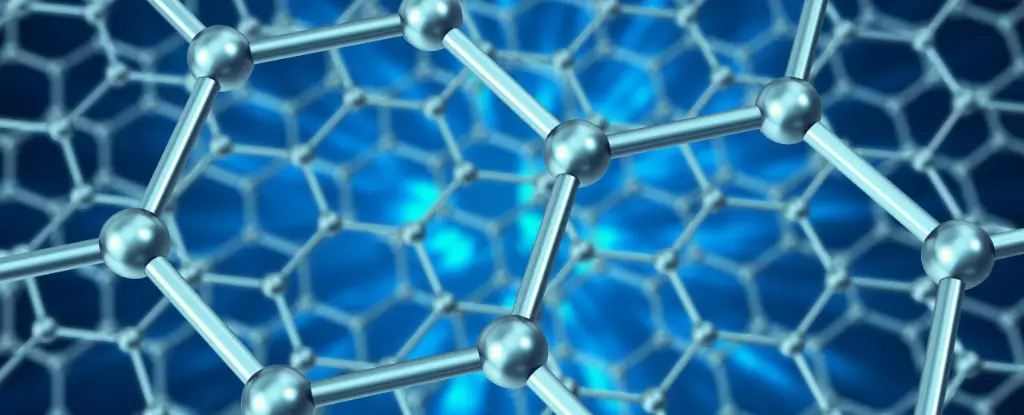In the realm of condensed matter physics, the interaction between electrons and their environments yields fascinating insights. Recently, a group of researchers, including teams from the University of British Columbia, the University of Washington, Johns Hopkins University, and Japan’s National Institute for Materials Science, delved into the peculiar properties of currents flowing through dual layers of graphene. Their groundbreaking findings illuminate a novel state of matter that can significantly advance quantum technologies and thermal conductivity at room temperature.
Graphene, a substance consisting of a single layer of carbon atoms arranged in a two-dimensional honeycomb lattice, is often hailed as a “wonder material” due to its exceptional electrical and mechanical properties. Within its structure, electrons behave in remarkably fluid manners—akin to pieces on a game board of quantum chess. By altering the arrangement of these carbon atoms in unique configurations, researchers can manipulate the pathways that electrons traverse, which can subsequently lead to direct implications for material conductivity.
At the heart of this study is an innovative technique that twists two distinct sheets of graphene, which invokes what is known as the Moiré effect. This phenomenon, characterized by interference patterns that emerge when two grids overlap, causes fascinating variations in the electron landscape. As the configuration of these twisted graphene sheets induces novel interference patterns, it disrupts traditional electron pathways, yielding unusual electron behavior.
The research team asserts that this modified topology of the electron system leads to a radical change: electrons, which would typically flow freely, become confined to specific arrangements—a phase termed a Wigner crystal. This freezing effect results in the formation of a structured arrangement, contradicting previous understandings of cryogenically induced electron states. Remarkably, this newly formed electronic crystal is capable of conducting electricity along its edges, presenting a paradox that challenges prior conceptions.
These discoveries not only confirm previous theoretical predictions about electron dynamics in crystalline structures but also open portals to entirely new quantum states. Notably, phenomena such as the quantum Hall effect emerge from these innovations—an effect wherein resistance quantizes into discrete increments. The implications for quantum computing are significant; the pursuit of qubits—elements that can represent and process information—could benefit from the unique properties exhibited by these topologically constrained electron states.
Given the ever-growing demands for robust quantum computing systems, the potential to harness these twisted configurations of graphene could redefine the technological agenda for future electronics. In essence, the ability to manipulate electronic states within a geometrically tortured construct might unleash a plethora of exotic quasiparticles, fundamentally reshaping our understanding of electron dynamics at micro and nano scales.
The work conducted thus far not only provides critical insights into electron behavior but also serves as a launchpad for further exploration. The prospect of manipulating electron states through geometry can lead to unprecedented advancements in producing materials that behave predictably under varying conditions. More importantly, the unique characteristics of these engineered states could vastly enhance the performance of devices across a spectrum of technological applications, from superconductors to advanced quantum devices.
The investigations into the twisted layers of graphene uncover a rich tapestry of physics waiting to be explored. With ongoing research, we stand at the cusp of unraveling the mysteries of these novel electron states. The unfolding chapters of this research could very well represent a turning point that shifts the paradigm in quantum technology, ushering in a new era defined by astonishing advancements. Continuing to explore this unconventional landscape of graphene might not only reveal deeper understandings of quantum mechanics but also propagate innovations that could shape the future of computing and material science as we know it.


Leave a Reply